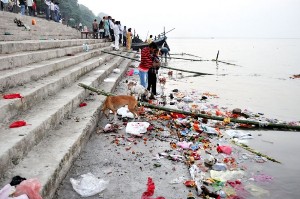 NEW DELHI: The centre is now turning to bacterial bioremediation techniques to treat Ganga water at various sites. The bioremediation technique using ‘sewage-eating microbes’ quickens the process of improvement in the quality of river water while STP (sewage treatment plants) typically take two to three years to come up.
NEW DELHI: The centre is now turning to bacterial bioremediation techniques to treat Ganga water at various sites. The bioremediation technique using ‘sewage-eating microbes’ quickens the process of improvement in the quality of river water while STP (sewage treatment plants) typically take two to three years to come up.
The bacteria play a vital role in sewage treatment by eating up contaminants such as oil and organic matter without causing any release of a foul odour. The process thus also reduces stench from raw sewage. During the process of treatment, pollutants like heavy metals and toxic chemicals are reduced. The microbial dosing under the technique is done as per requirement assessed in terms of organic pollutants (microbial food) content in sewage.
The National Mission for Clean Ganga (NMCG) authority has recently approved two more pilot projects – one each in Patna and Allahabad – and planned to scale it up further by identifying 54 drains across four states – Uttar Pradesh (30), West Bengal (20), Bihar (3) and Jharkhand (1) – where bioremediation techniques can be used to prevent polluted water from flowing directly into the Ganga.
Referring to the long gestation period of STPs, the NMCG in a note said, “Since during the intervening period, sewage continues to flow into river Ganga and its tributaries, there is a need to manage the pollution load by in-situ treatments through various innovative technologies available across the globe. In-situ treatment is simple and easy-to-operate and does not require major modification of the drain”.
The NMCG added, “These (bioremediation techniques) are significantly less costly and require much shorter time duration of 6-8 months for commissioning and showing results. Implementing these techniques prevent the degraded quality of water from flowing directly into river Ganga and its tributaries.”
Some of the drains identified by the NMCG for application of bioremediation techniques include Golaghat, Ranighat and Budhiyaghat drain in Kanpur; Sasurkhaderi and Mavaiya drain in Allahabad; Nagwa and Rajghat drain in Varanasi; Saklichand drain in Bhagalpur and RamkrishnaMullickGhat and TelkalGhat drains in Howrah among others.

